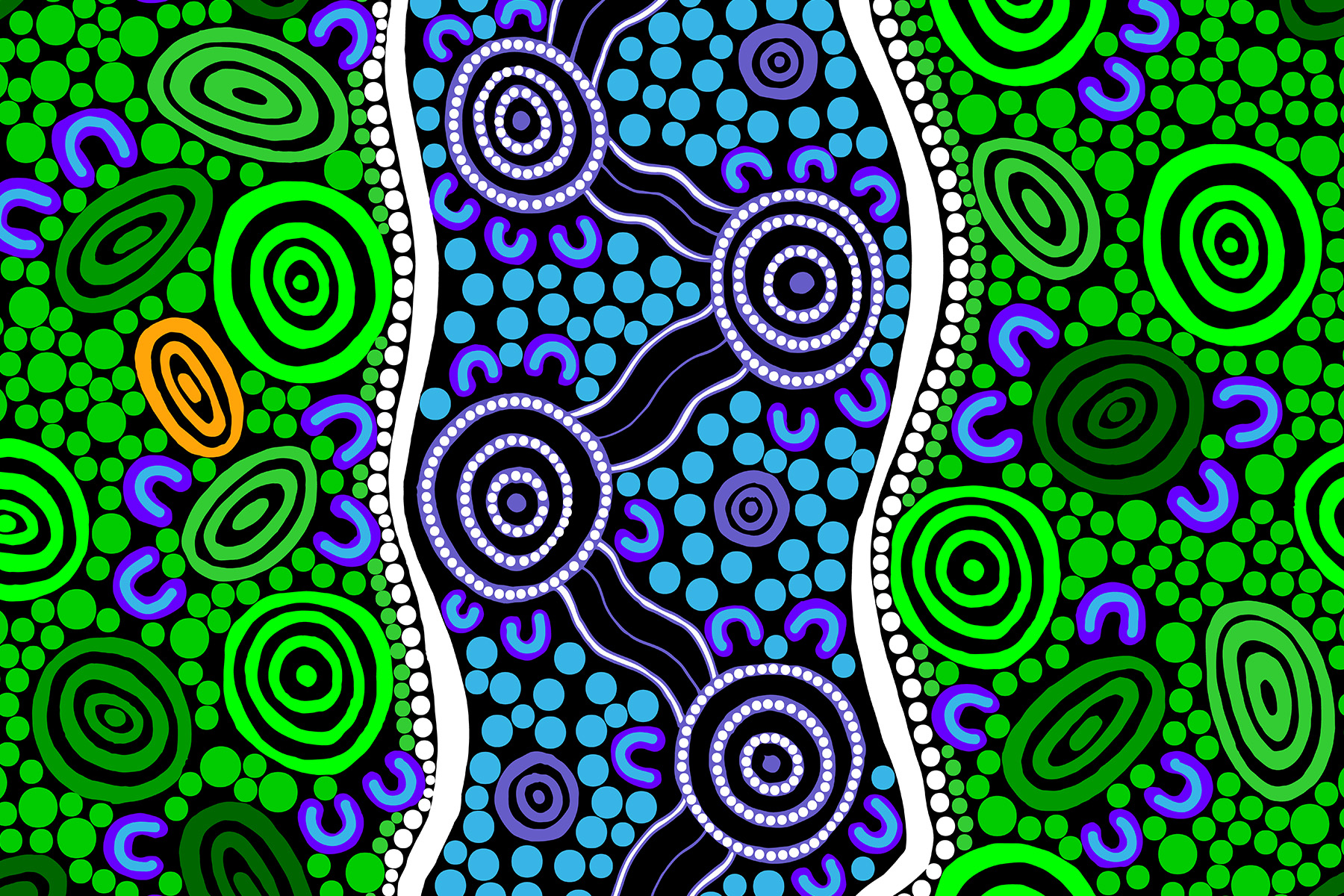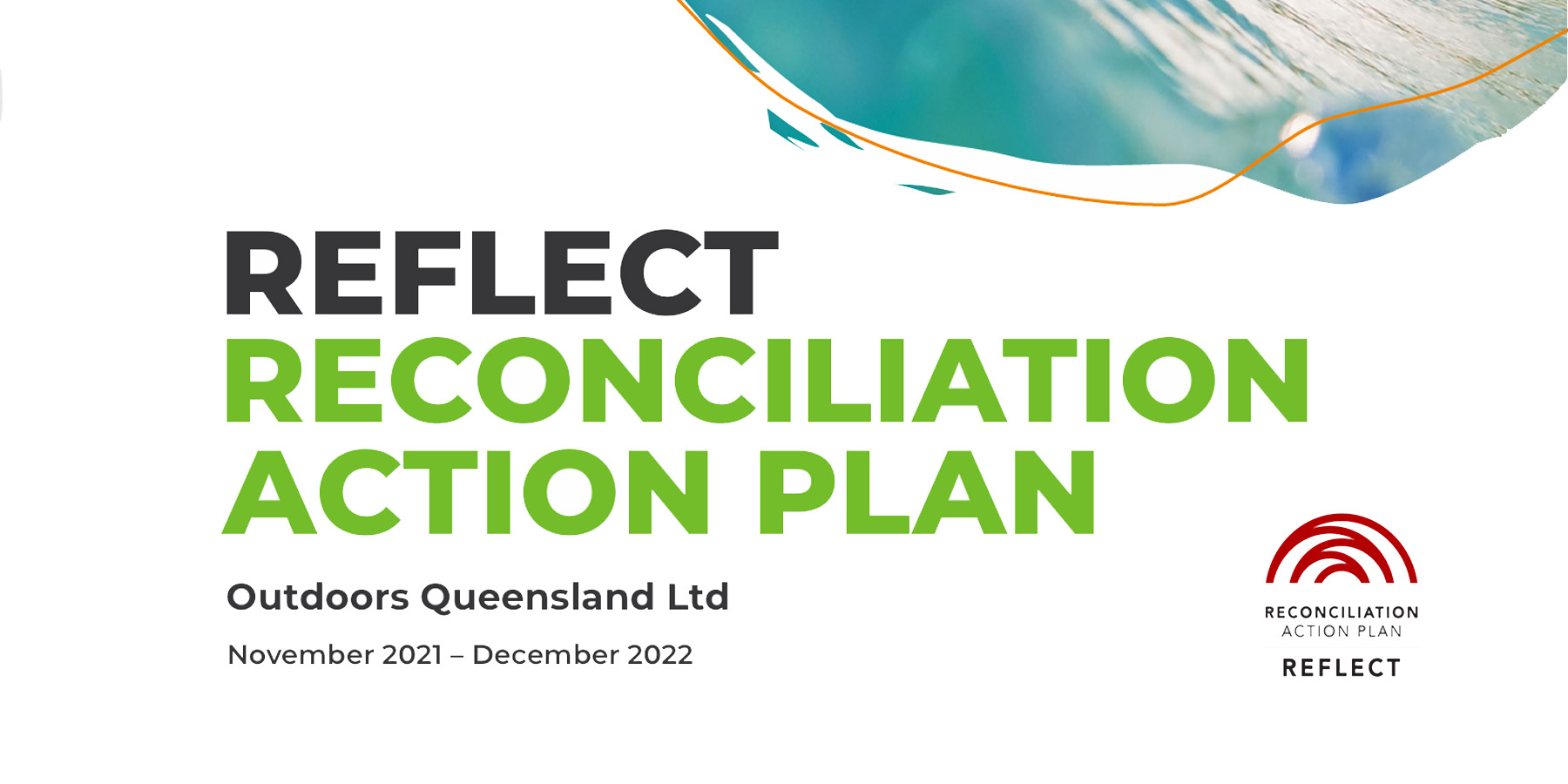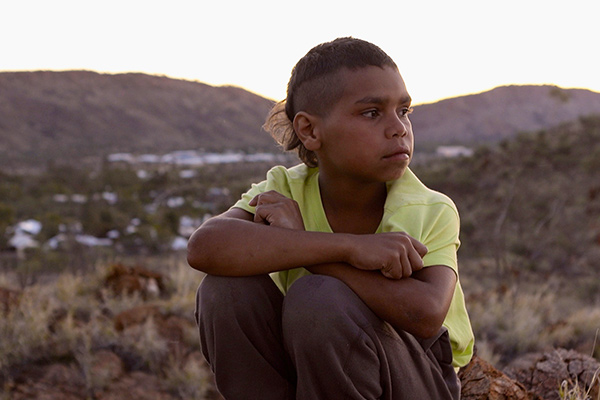
Tourism and Events Queensland
Indigenous Cultural Awareness

Outdoors Queensland respectfully acknowledges the Traditional Custodians of this land, their elders past, present and emerging, for the important role Aboriginal and Torres Strait Islander peoples continue to play in Queensland and most especially on the land, air and waterways used for outdoor recreation.
The ancestors of Aboriginal and Torres Strait Islander peoples have walked this country for generation upon generation and we acknowledge their special and unique place in our nation’s historical, cultural and environmental identity.

Aboriginal and Torres Strait Islander people should be aware that these pages may contain images, voices or names of deceased persons in photographs, film, audio recordings or printed material.
Reconciliation
At its heart, reconciliation is about strengthening relationships between Aboriginal and Torres Strait Islander peoples and non-Indigenous peoples, for the benefit of all Australians.
Reconciliation is an ongoing journey that reminds us that while generations of Australians have fought hard for meaningful change, future gains are likely to take just as much, if not more, effort.
In a just, equitable and reconciled Australia, Aboriginal and Torres Strait Islander children will have the same life chances and choices as non-Indigenous children, and the length and quality of a person’s life will not be determined by their racial background.
A reconciled Australia is one where our rights as First Australians are not just respected but championed in all the places that matter (Kirstie Parker, Reconciliation Australia)
The Five Dimensions of Reconciliation
All Australians understand and value Aboriginal and Torres Strait Islander and non-Indigenous cultures, rights and experiences, which results in stronger relationships based on trust and respect and that are free of racism.
Goal: Positive two-way relationships built on trust and respect exist between Aboriginal and Torres Strait Islander and non-Indigenous Australians throughout society.
Action: Overcome racism
Aboriginal and Torres Strait Islander peoples participate equally in a range of life opportunities and the unique rights of Aboriginal and Torres Strait Islander peoples are recognised and upheld.
Goal: Aboriginal and Torres Strait Islander Australians participate equally and equitably in all areas of life—i.e. we have closed the gaps in life outcomes—and the distinctive individual and collective rights and cultures of Aboriginal and Torres Strait Islander peoples are universally recognised and respected. Aboriginal and Torres Strait Islander people are self-determining.
Action: Renew focus on Closing the Gap
Goal: Our political, business and community institutions actively support all dimensions of reconciliation.
Action: Capitalise on the RAP Program to create a wider range of opportunities for Aboriginal and Torres Strait Islander Australians.
Islander cultures and heritage as a proud part of a shared national identity.
Goal: Aboriginal and Torres Strait Islander histories, cultures and rights are a valued and recognised part of a shared national identity and, as a result, there is national unity.
Action: Achieve a process to recognise Australia’s First Peoples in our Constitution.
Goal: There is widespread acceptance of our nation’s history and agreement that the wrongs of the past will never be repeated— there is truth, justice, healing and historical acceptance.
Action: Acknowledge our past through education and understanding.
Reconciliation Action Plans
The Reconciliation Action Plan (RAP) program provides a framework for organisations to support the national reconciliation movement.
No matter where your organisation is on its reconciliation journey, there is a RAP to suit. Schools and early learning services can develop a RAP through Narragunnawali (Reconciliation in Education). Workplaces can be supported to develop one of four types of RAP – Reflect, Innovate, Stretch or Elevate.
Workplaces
A RAP is a strategic document that supports an organisation’s business plan. It includes practical actions that will drive an organisation’s contribution to reconciliation both internally and in the communities in which it operates.
The RAP Program contributes to advancing the five dimensions of reconciliation by supporting organisations to develop respectful relationships and create meaningful opportunities with Aboriginal and Torres Strait Islander peoples.
Each of the four RAP types (Reflect, Innovate, Stretch, Elevate) set out the minimum elements required from your organisation to build strong relationships, respect and opportunities within your organisation and community.
Schools and Early Learning Services
Schools and early learning services can develop a RAP through Narragunnawali: Reconciliation in Education.
Narragunnawali supports all schools and early learning services in Australia to foster a higher level of knowledge and pride in Aboriginal and Torres Strait Islander histories, cultures and contributions.
The Narragunnawali platform is free to access and hosts a wealth of professional learning and curriculum resources to support the development, implementation and management of RAPs in schools and early learning services.

The Outdoors Queensland Reconciliation Action Plan
The Reflect Reconciliation Action Plan (RAP), the first step on our reconciliation journey enables Outdoors Queensland to deepen its understanding of its sphere of influence and the unique contribution it can make to lead progress across the five dimensions of reconciliation: race relations; equality and equity; institutional integrity; unity; and historical acceptance. Getting this first step right ensures the sustainability of our future RAPs and reconciliation initiatives, and provides meaningful impact for the part we play in Australia’s reconciliation journey.

Why an Acknowledgement of Country is Important
(and advice on how to give one)
Over the years, Welcomes to and Acknowledgements of Country have become a lot more known in Australia. As a First Nation person myself, this has given me hope to us as people getting the recognition we deserve.
(Molly Hunt)
A Welcome to Country is a traditional ceremony given by Aboriginal or Torres Strait Islander elders. Welcomes are also performed by Traditional owners that elders have given permission to. This is a tradition that has been practiced in Aboriginal culture for thousands of years.
It is given to open proceedings at an event by welcoming you, your organisation and visitors to Country.
Australia is made up of many different tribes with different land areas. In the old days, tribes that wanted to pass through another tribe’s country needed permission to do so and had to be welcomed through. It may involve stories, dance, song, a smoking ceremony or other activities.
See also:
Welcome to Country and Acknowledgement of Land: the what, why, when and how.
What is the difference between a Welcome To Country and an Acknowledgement of Land
(Lindsay Stanford, Blakworks)
Acknowledgement of Land
An Acknowledgement of Land (or Acknowledgement of Country) serves the same purpose as a Welcome; to introduce and recognise the land and tradition, except in the case of an Acknowledgement, you are acknowledging Aboriginal people, Traditional Custodians and the land, rather than welcoming people to it. And, an Acknowledgement of Country can be given by any person, Aboriginal or non-Aboriginal.
Source: What is the difference between a Welcome To Country and an Acknowledgement of Land (Lindsay Stanford, Blakworks)
“It’s very much up to the discretion of the person doing it, it needs to be earnest, more than anything else.” (Scott Kneebone)
As well as spoken Acknowledgements of Country at events or gatherings, they can also be written and be part of email signatures, featured on websites and signs at the entrances of businesses and homes.
So, how can you write a good Acknowledgment of Country?
- Find out whose land you’re on. Do your research and be specific.
- Show respect. Be earnest and genuine.
- Adapt to suit your context. It’s easy to download an already scripted acknowledgment, try to write one in your voice.
- Be confident. Speak with purpose.
- Avoid using past tense. We are still here.
- Use correct terminology. Don’t use ‘Aborigines’. It is a derogatory word.
- Breathe. Take your time.
An invitation to understand country
Indigenous people often talk about the importance of country. But what does it mean?
The idea that humans are part of the environment, and the wellbeing of one depends on the other, is a recurring theme – everything is connected and needs respect — not just humans, animals, trees and rocks — but land and sky, and past and present.
Jamie* talks about how his ancestors were often cremated within the “big scar” trees in the forest, releasing their spirits to the country and more.
“Their very physical being would be taken up by these trees,” he says.
“So, when we smoke them, I’m physically and spiritually introducing you to those Old People.”
* Jamie Graham-Blair, a trawlwoolway pakana man(Tasmania).
This map attempts to represent the language, social or nation groups of Aboriginal Australia. It shows only the general locations of larger groupings of people which may include clans, dialects or individual languages in a group. It used published resources from the eighteenth century-1994 and is not intended to be exact, nor the boundaries fixed. It is not suitable for native title or other land claims.
The information on which the map is based is contested and may not be agreed to by some traditional custodians. The borders between groups are purposefully represented as slightly blurred. They do not claim to be exact.
The map was developed along with the Encyclopedia of Aboriginal Australia as part of a research project. The Encyclopedia is available in libraries and contains more detailed information about the groups represented on the map.
Source
Australian Institute of Aboriginal and Torres Strait Islander Studies
Creator: David R Horton, © AIATSIS, 1996.
No reproduction without permission. To purchase a print version visit: https://shop.aiatsis.gov.au
Gambay: Australian First Languages Map
First Languages Australia has developed an interactive map to display and promote the diversity of Australia’s Aboriginal languages and Torres Strait Islander languages. The map is called Gambay, which means ‘together’ in the Butchulla language of the Hervey Bay region in Queensland.
Aboriginal Flag
The flag consists of a coloured rectangle divided in half horizontally, the upper half black and lower red. A yellow circle sits at the centre of the rectangle. The designer Harold Thomas says the colours of the flag represent the Aboriginal people of Australia, the red ochre colour of earth and a spiritual relation to the land and the sun, the giver of life and protector. Learn More (AIATSIS)
Understanding First Nations cultural protocols in Australia
Best Practice Guide for Working with First Nations Tourism in Queensland
The Best Practice Guide for Working with First Nations Tourism in Queensland (the Guide) is the first of its kind in Queensland and it aligns the interests and aspirations of the First Nations tourism sector and Queensland’s wider mainstream tourism industry.
Source: Queensland Tourism Industry Council
Related Articles
This is a map of sites where violence occurred on the Australian frontier.
This site does not contain images of people who have died. However, the historical records reproduced here use archaic terms that are racist and offensive, and the themes and content within will be distressing to many people. Discretion is advised.
Source
The Guardian
Freeing the Aboriginal flag

How a ‘uniting symbol’ ended up in the hands of the few
The Aboriginal flag is a powerful symbol that has come to mean many things to many people. Since its creation in 1971, it has appeared on everything from jumbo jets to tattoos.
So who “owns” the flag? Who has the right to reproduce it, and why is there such a battle over these issues today? The article’s a summary of how we got here.
Read More
Source: The Guardian
How to listen and learn from Indigenous children in order to help them

At the time of filming In My Blood It Runs, Dujuan Hoosan was just 10 years old, but he could see how the education system did not value his cultural knowledge.
Dujuan is a proud Arrernte and Garrwa boy who lives in Hidden Valley town camp in Alice Springs. He also has healing powers; a gift his grandfather passed on to him.
“It’s my job to look after the people,” he says in the film.
In one scene, his aunt asks him to heal her while she is in a hospital bed with a leg wound.
But we also see Dujuan struggle with school attendance — a challenge many Aboriginal and Torres Strait Islander children face across the county.
The Australian Institute of Health and Welfare reports that primary school attendance rates for Indigenous students “did not improve between 2014 and 2018 and they remained below the rate for non-Indigenous students”.
By following Dujuan we can learn why this is a challenge for young Indigenous kids and Indigenous families. Read More / Watch Trailer
Source: ABC News
Aboriginal underwater archaeological sites discovered

Scientists have discovered Australia’s first ever ancient Aboriginal underwater archaeological sites, settled on the sea bed for thousands of years.
Hidden relics, including hundreds of stone tools and grinding stones, have been found at two sites off Western Australia’s remote Pilbara region, close to the Burrup Peninsula which is renowned for its ancient rock engravings.
“For me, this is the find of a lifetime,” said lead archaeologist Associate Professor Jonathan Benjamin from Flinders University. Read More
Source: ABC News
Useful Links & Resources
Disclaimer
The information on this page has been taken from credible sources and is shared with the best of intentions. While we have have done our best to provide the most accurate information, we see this page as a living document which will be updated as new content becomes available.
If you would like to share resources, links or other material to be considered for the page, please email operations@outdoorsqueenland.com.au





